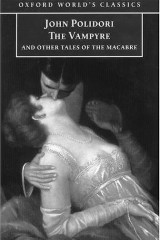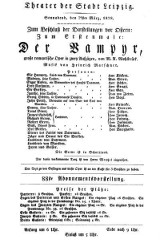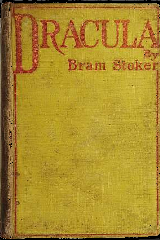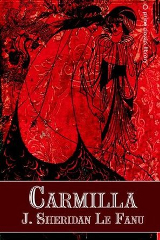The Silken Thorn
Vampires in Classic Literature

The Vampyre - - Polidori
In 1819 Polidori published The Vampyre anonymously. According to historical accounts of the Keats Shelley House, Lord Byron hosted Polidori, Mary Shelley, and others for a time at his place in Geneva. During this stay, Lord Byron suggested that they each should pen a ghost story. Polidori was inspired to write The Vampyre on the same evening that Mary Shelley was inspired to write Frankenstein.
The piece gained popularity in Europe and rumor has it that Beethoven even bought a copy while staying in Vienna.
The character Ruthven from The Vampyre later surfaces in the story of Byzantium.

The Vampyr - - Opera by Heinrich Marschner
Nine years after Polidori published his wildly popular The Vampire, Marschner (a playwrite) worked with Lindpaintner (a German composer) to turn this popular piece into an opera. This brought Vampires to the operatic stage in a new way and inspired passionate interest within the performing arts.

Dracula - - Bram Stoker
First written in 1897, this piece has the heaviest impact on how the modern era sees and responds to vampires in both books and movies
The style of this piece is Epistolic. It tells the dark tale of Johnathan Harker as he travels to the castle of Count Dracula on a work assignment. Johnathan's sanity is tested as the Count invades his dreams and begins to exert control over his communication with the outside world. Unique in contrast to many other vampire tales that followed, Count Dracula has a large number of supernatural abilities including the ability to go in the daylight without dying (or sparkling).
This work went to great lengths to explore the passion of vampires, presenting Count Dracula with his three lusty wives and as well as his blood and physical lust for a woman named Lucy.

Carmilla - - Sheridan le Fanu
A lesser known classic that has resurfaced in popularity, Carmilla presents the medical casebook of a young girl named Laura and tells her story as she recounts being haunted in her childhood and later falls in love with a girl who comes to live with her at her home.
This was the first penned account of a lesbian love story, though the nature of the love between Carmilla and Laura isn't fully rooted in traditional Romance, it can also be seen as Victim-Prey or Mother-Daughter.
As part of its resurgence, Carmilla has been produced as a series of internet-based film shorts.